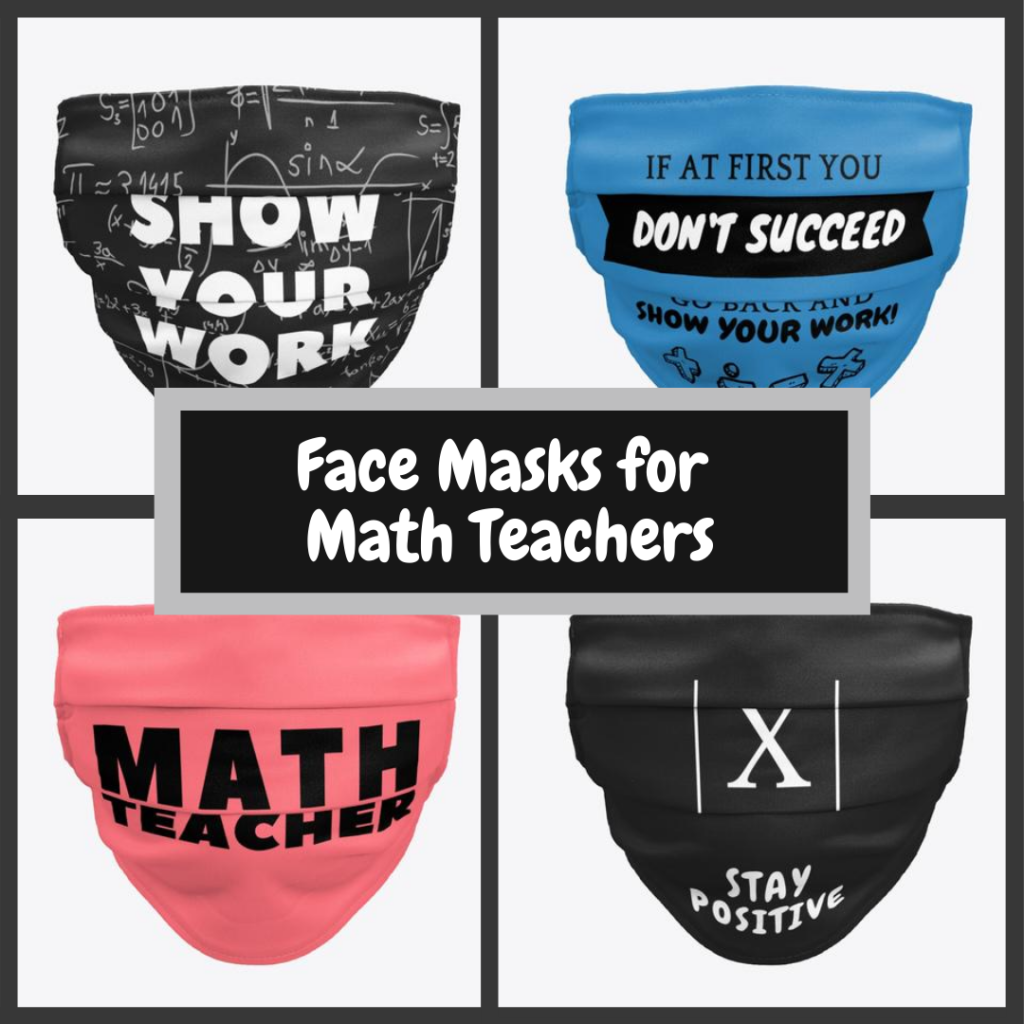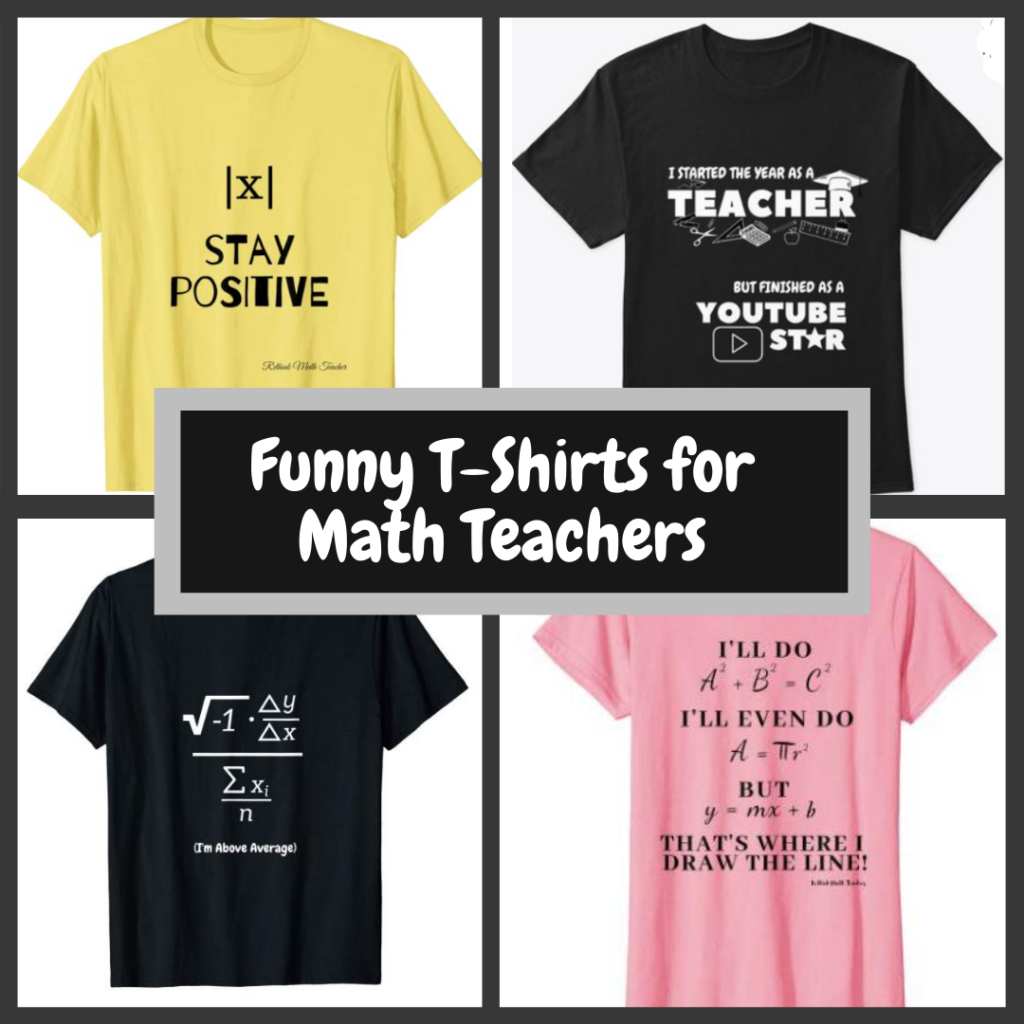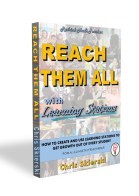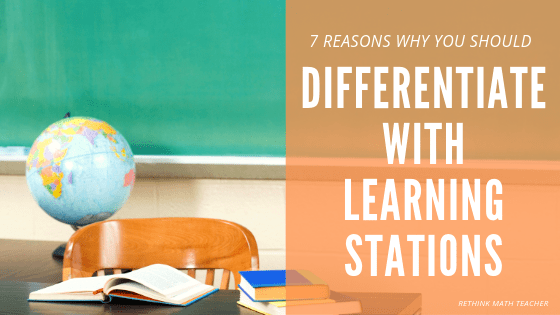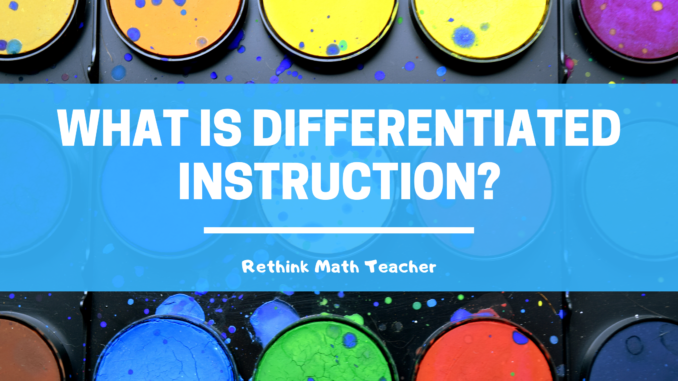
Differentiated instruction has meant a lot of different things throughout the history of education
Recently, a lot of the talk around differentiation involves alternative assessments. Which meant checking for comprehension using a method besides your traditional paper or computer based test. In the math class that could be an oral presentation, a project, writing a summarization about what you’ve learned, or creating something to teach the class on the topic being covered.
And a while back, the push for differentiated instruction was recognizing that students had different learning styles; some were visual, and some were auditory or kinesthetic learners – and then you were supposed to differentiate your instruction to try and hit all of the different learning styles.
But when I teach on differentiated instruction, on this website, or my online class, or book, I’m not referring to either of those.
A New Way to Differentiate
In your classroom is a room full of students who are all different. They have different experiences, with different backgrounds, and they come to you with different learning needs. Not all are on grade level. Some are actually above grade level, and some are far below.
But those that are academically behind are struggling for different reasons. Some of them require more practice then their peers because they don’t learn as quickly as other students. Some are afraid to make mistakes so they don’t put forth a good effort, so their learning process is delayed.
More likely then not, the reason a student is struggling is because they are unable to perform some of the academic skills required to do the grade level work in your class. For example, they don’t know how to add integers, or they don’t know their times tables, or how to plot a point on a coordinate plane.

What a Mess!
So you have a room full of students who are academically all over the place, for different reasons, requiring different accommodations and skill remediation. How are you going to reach all of them?
How can you meet everyone’s needs when they are so diverse?
When it Hit Me
In my first year teaching math, I was teaching middle school intensive math (intensive math is an additional math class for students who score below grade level).
I was trying to help my students master adding fractions. And since I knew how foundational this skill was, I got in my head that I was not moving on to the skill, until the majority of the class had mastered it.
After 3 weeks, most still hadn’t learned it, and I was getting frustrated.
I was forced to reevaluate some things. As I worked with the students more closely, I started to realize that they were all struggling, but they were all struggling for different reasons. Some couldn’t add fractions because they couldn’t find common denominators, and some couldn’t because they still didn’t understand how to convert fractions. Some could do both of those but were struggling with the actual skill of adding fractions, and walking through the steps. And some were NOT struggling. They were bored because we’d been doing this for many weeks and they didn’t need it. They needed to be progressed.
My Bad!
The error that I was making was that I was treating all of the students like they had the same issue – they couldn’t add fractions. And once I recognized that they were struggling for different reasons, I realized that I needed to meet each student at their need.
The students who could still didn’t know how to find common denominators had to learn that before I could teach them how to add fractions. Those who needed to learn how to convert and simplify fractions also needed a reteach before moving on.
And those who already mastered the skill needed to stop being held back!
But How?
How could I reach each student when they needed to be working on several different skills?
I couldn’t teach four different lessons, could I? Was I supposed to give practice work on four different skills? Grade four different types of work? Create four different tests?
Eureka!
I realized that to teach adding fractions, I had to remediate three different skills: converting (and simplify) fractions, finding common denominators, and adding fractions.
I realized that to learn a skill, the student needs to first be shown how to perform the task. So I need to provide a tutorial for the students working on each skill. And since they would be working in the same room, at the same time, but on different skills, it couldn’t be direct instruction from me.
What Else I Learned
I also had come to the epiphany that a key ingredient to learning something is being given the opportunity to practice it multiple times.
Thus, I need to provide instruction and practice (with immediate feedback) for each different skill. It seemed to me that the best way to do this was inside of a pre-built learning station.
What I Created
So I started building learning stations for each skill needed for adding fractions. Inside the stations I put a tutorial and lot practice problems with immediate feedback.
But then I realized that I needed to have a diagnostic to know which students needed to work on which skills.
I also needed an assessment to help me measure whether or not a student had mastered the skill they were working on and were thus ready to move on to the next learning station.
And so, learning stations were born. A way for me to provide skills-based remediation for all my students while accelerating those who were ready to move on. This method also allowed me to keep a student working on a skill for as long as they needed, so I was no longer punishing them for making mistakes or not learning something as fast as the other students.
This teaching method allowed me to celebrate success. Since I was giving assessments very often, we started making a big deal out of students who were showing growth. Every time someone mastered a new skill, we celebrated it. And the students loved it!
Plus, data collection was constantly occurring as I measured students growth and celebrated their success.



